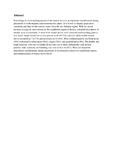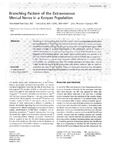| dc.contributor.author | Loyal, PK | |
| dc.contributor.author | Butt, F | |
| dc.contributor.author | Ogeng'o, Julius A | |
| dc.date.accessioned | 2014-02-24T11:33:18Z | |
| dc.date.available | 2014-02-24T11:33:18Z | |
| dc.date.issued | 2013-12 | |
| dc.identifier.citation | Loyal PK, Butt F, Ogeng’o JA. "Branching pattern of the Extraosseus Mental Nerve in a Kenyan population." Craniomaxilofac Trauma Reconstruct. 2013;6:251-256. | en_US |
| dc.identifier.uri | http://www.ncbi.nlm.nih.gov/pubmed/24436770 | |
| dc.identifier.uri | http://hdl.handle.net/11295/64870 | |
| dc.description.abstract | Knowledge of the branching pattern of the mental nerve is an important consideration during placement of tooth implants and reconstructive plates. It is known to display population variations and data for the same is scarce form the sub-Saharan region. With the recent increase in surgical interventions in the mandibular region in Kenya, a detailed description of mental nerve is warranted. A total of 64 mental nerves were dissected and branching pattern was noted. Single mental nerve was present in 60 (93.7%) cadavers while double mental nerves occurred in 3 (4.7%) and accessory in 1(1.6%). Most common pattern was bifurcation (39%) followed by trifurcation (34%), single (19%), and quadrification (8%). The double and triple branches were seen to further divide into two to three subbranches with diverse patterns. Side symmetry in branching was seen in four (6.25%). These are important anatomical considerations during placement of reconstructive plates for mandibular trauma and administration of mental nerve blocks | en_US |
| dc.language.iso | en | en_US |
| dc.publisher | University of Nairobi | en_US |
| dc.title | Branching pattern of the extraosseus mental nerve in a Kenyan population | en_US |
| dc.type | Article | en_US |


